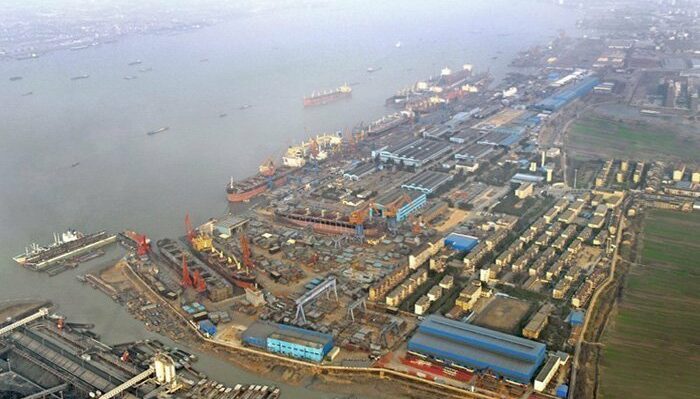China looks at adding shipping to the world’s largest emissions trading scheme

The world’s largest emissions trading scheme (ETS) kicked off last month, and shipping has been warned today it could be included in it.
While shipping has been focused on the European Union’s bid to include shipping in its emissions trading scheme, further east, China has got its own scheme underway from February 1 and has outlined criteria for other industries to be included.
To begin with, the new nationwide scheme is focused on the thermal power sector, something that makes up nearly half of the nation’s carbon discharge and 14% of the world’s total, according to data from the International Energy Agency.
According to Week in China, an independent, Hong Kong-based publication, the aim ultimately is to include any company that discharged over 26,000 tonnes of carbon dioxide (or its equivalent) in any year between 2013 and 2019 as part of president Xi Jinping’s bid to peak carbon emissions by the end of this decade. The 26,000 tonnes threshold will likely impact a swathe of shipbuilders as well as top shipping lines.
China’s new scheme will be looking to replicate the success of its 16-year-old counterpart in the EU. Sources also tell Splash that Beijing is watching carefully to see how Europe’s likely inclusion of shipping into its ETS goes before taking a decision to do likewise. If Europe only applies the ETS to domestic European voyages then China is expected to follow suit. However, if Europe applies the scheme to all voyages into Europe from their origin, many of which will be from China, then China is expected to adjust its approach accordingly so there is not double counting.
Whatever pollution comes from ships in Chinese coastal waters is frankly very small fry
Tim Huxley, chairman of Hong Kong-based Mandarin Shipping, said that while there was still no word yet on the new scheme impacting shipping, he viewed it as “inevitable”.
Zhang Lingfang, a professor at Dalian Maritime University, said that the carbon trading system in China is still at a preliminary stage and needs greater legislative support for it to work. Numerous Chinese municipal schemes have not taken off in recent years.
“First of all, legislation from national level is still needed to strengthen the foundation of the carbon trading system and then guide the enterprises into the market while gradually expanding the coverage to more industries including petrochemical, shipping, aviation, construction, iron and steel and so on to increase the participation level of the entire society,” Zhang said.
Wei Zhuang, BIMCO’s regional manager based in Shanghai, told Splash: “As far as we understand, the recent program did not specify any details towards the shipping industry and China is still contemplating how to deal with shipping and the shipbuilding industry when it comes to GHG.”
Ralph Leszczynski, global head of research at Banchero Costa, said shipping was likely to be very far down the list of priorities as China sets about achieving Xi’s green goals.
“When it comes to carbon emissions, the power sector in China is really the big elephant in the room, as despite all the talk about renewables, at least two thirds of power generation in China still comes from coal-fuelled power plants,” Leszczynski said. If gas-powered utilities are added, then fully 80% of electricity in China is made from fossil fuels.
Also, China accounts for well over 50% of global steel production, and well over 50% of global aluminium production, with all the emissions and energy use that this requires.
“Whatever pollution comes from ships in Chinese coastal waters is frankly very small fry in comparison, and rightly should not be a priority,” Leszczynski said.
Elsewhere other emissions trading schemes are afoot with shipping likely to be targeted.
The United States, for instance, is looking at copying the European Union’s path to carbon pricing on shipping.
The House Natural Resources Committee, a congressional committee of the United States House of Representatives, introduced the Ocean Climate Based Solutions Act (OBSCA) last October.
The bill is designed to address a host of different topics, and begin to discuss ideas for future action including shipping and greenhouse gas emissions.
It includes a proposal for the US to copy the EU’s monitoring, reporting and verification of carbon dioxide emissions from maritime transport (MRV) regulation.
Title XIV of the American bill has the exact same language as the EU’s version. MRV schemes are designed to be the paving stone to carbon pricing.
